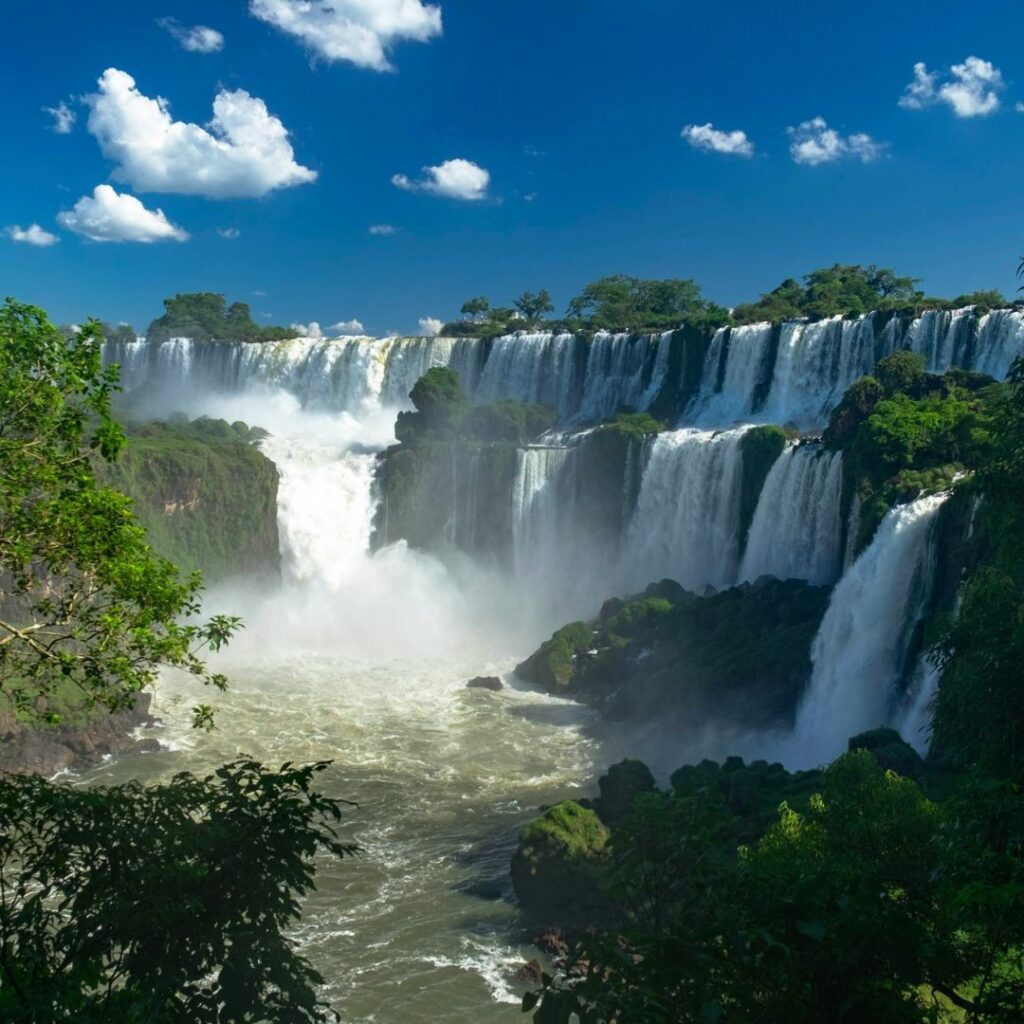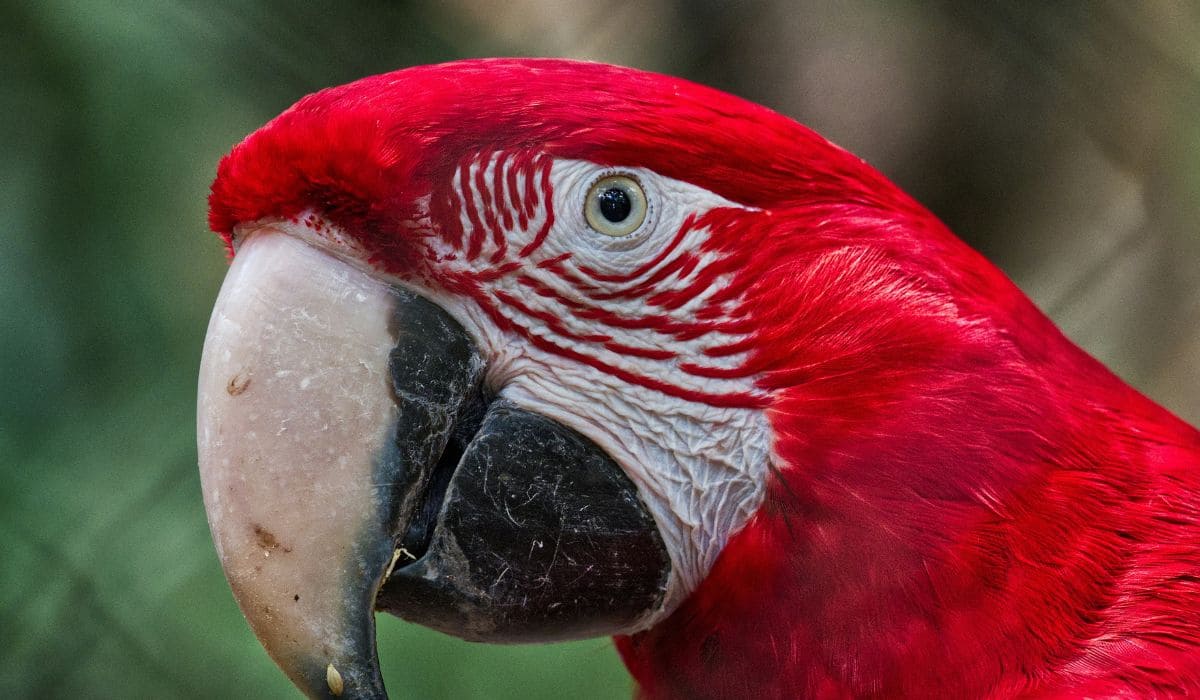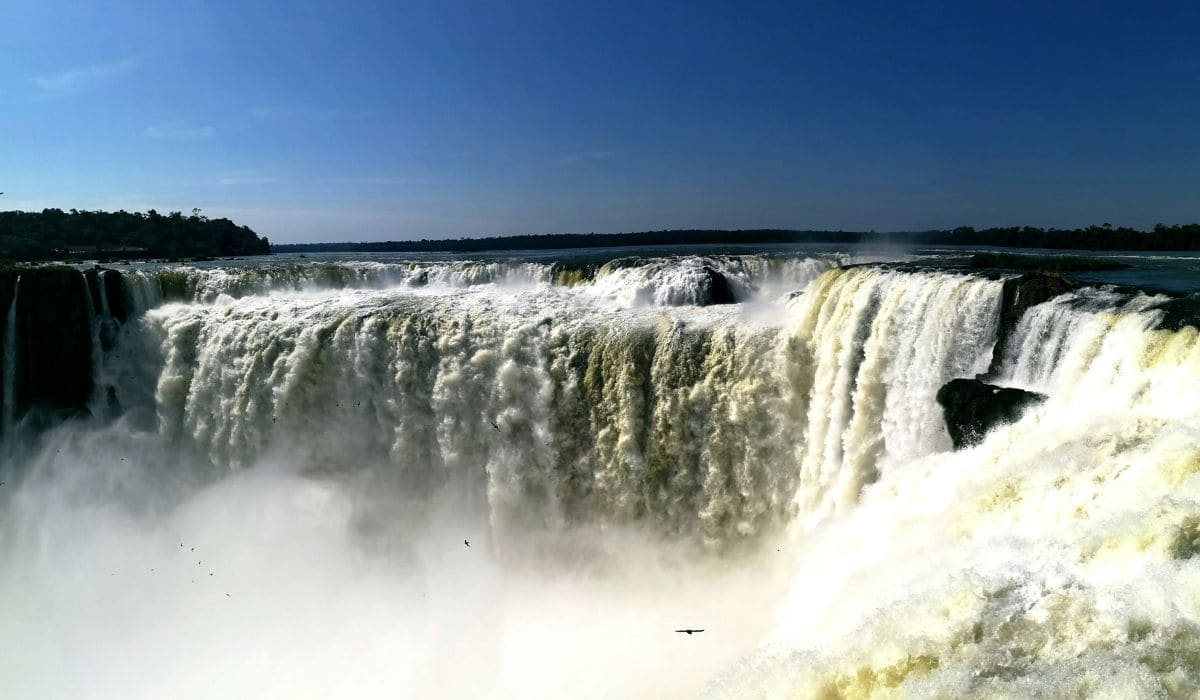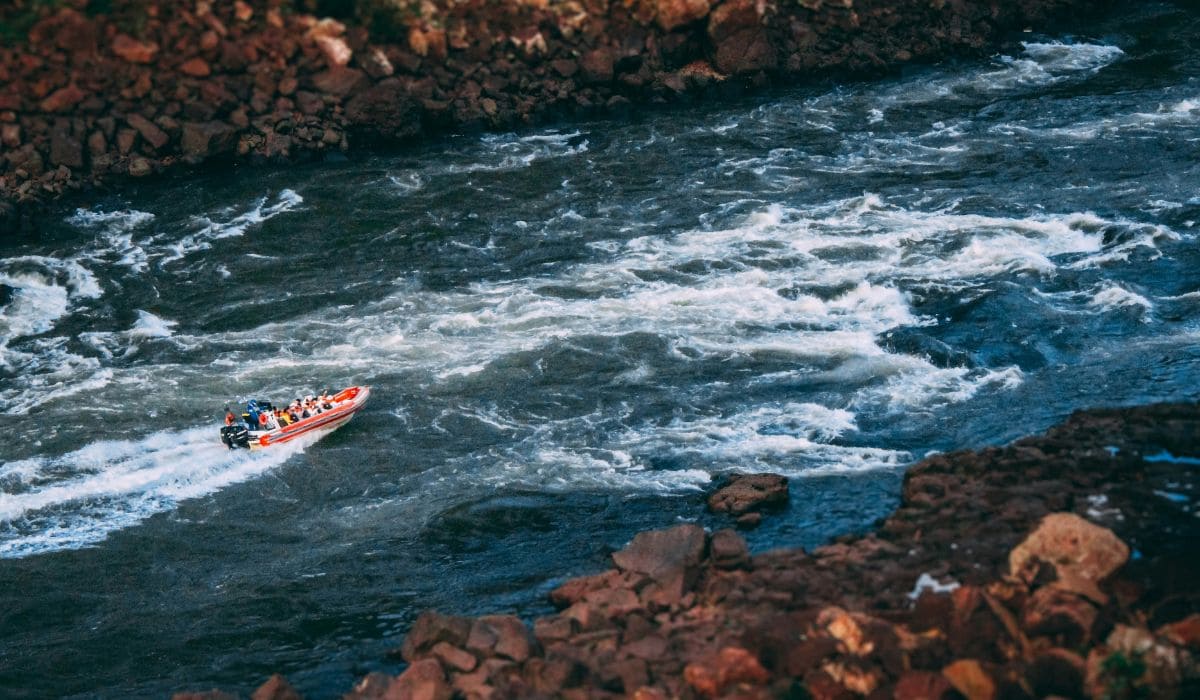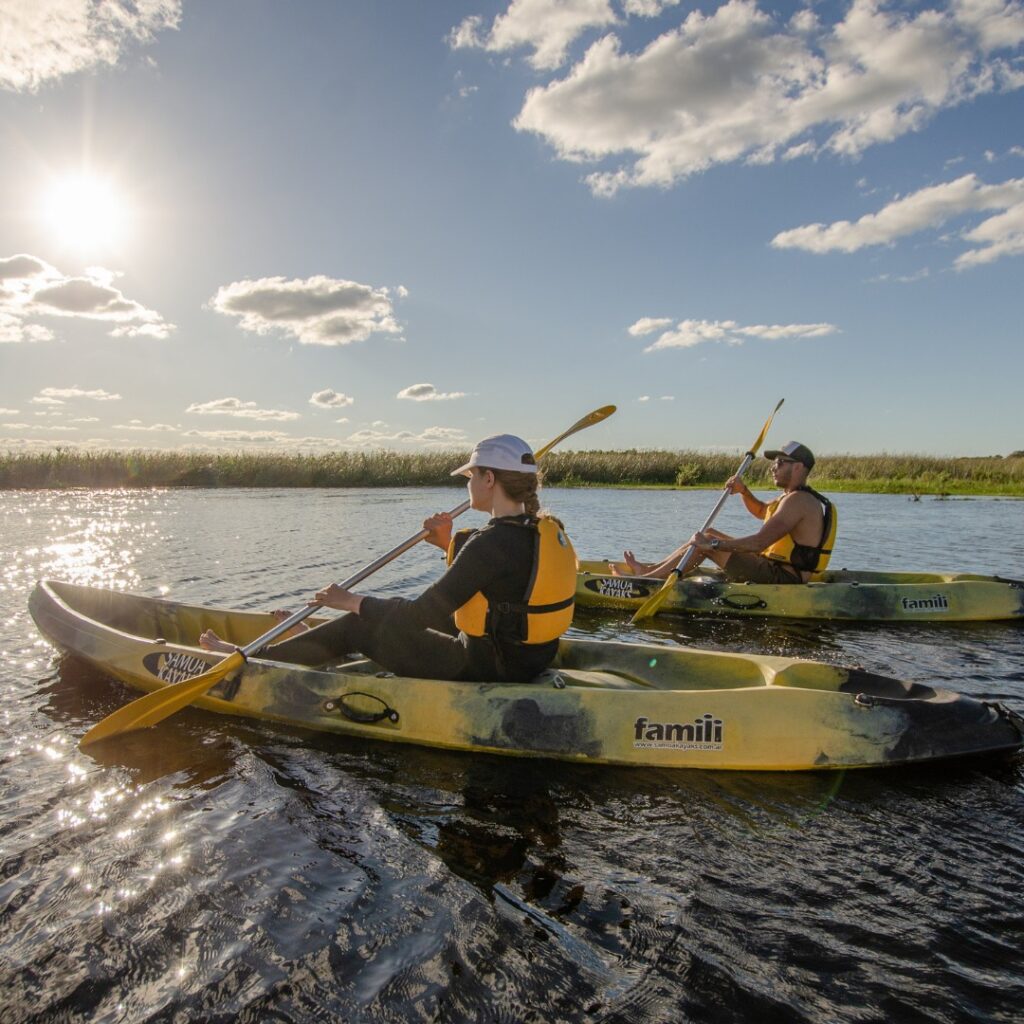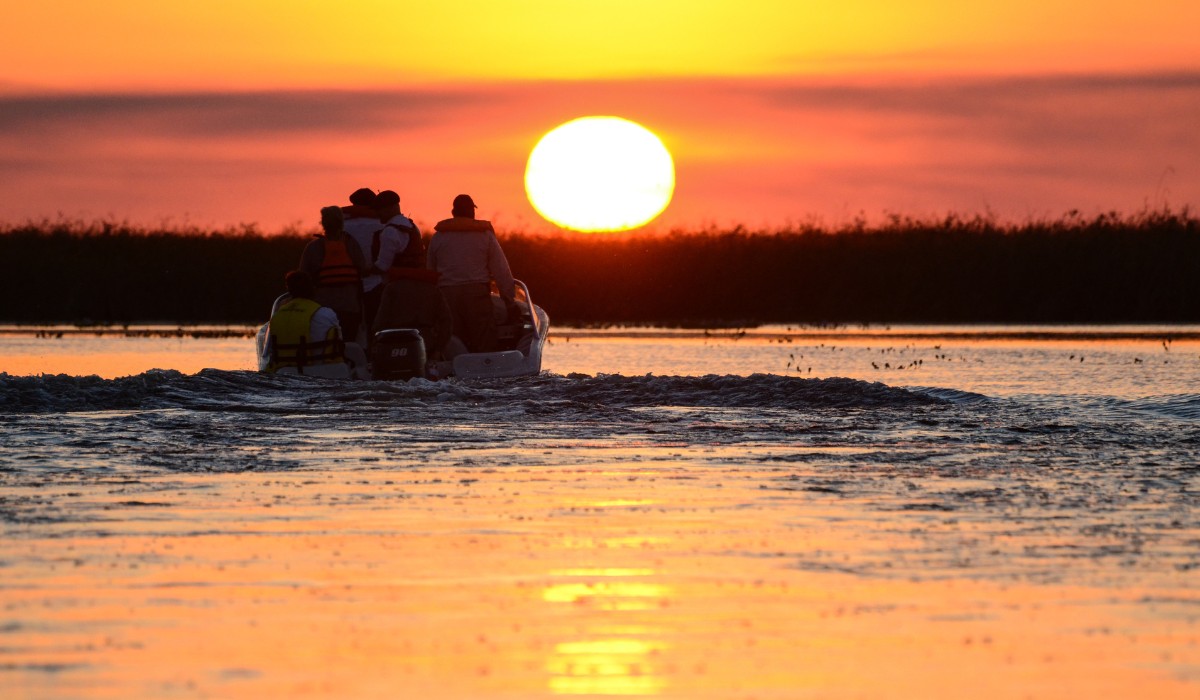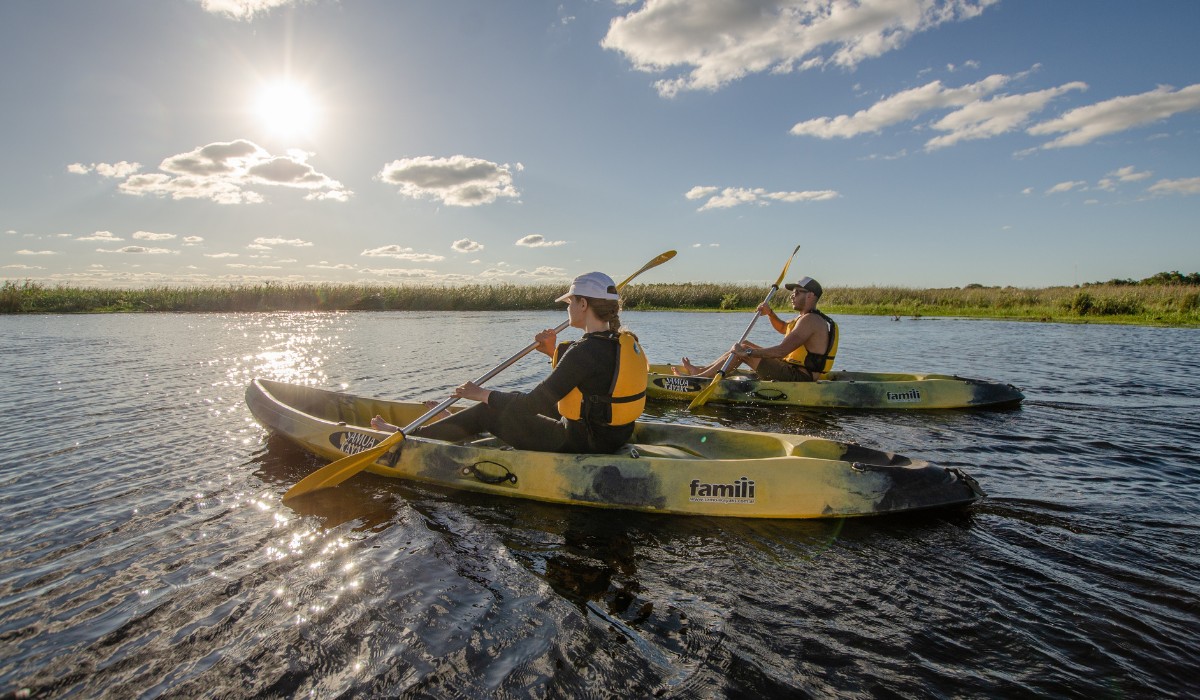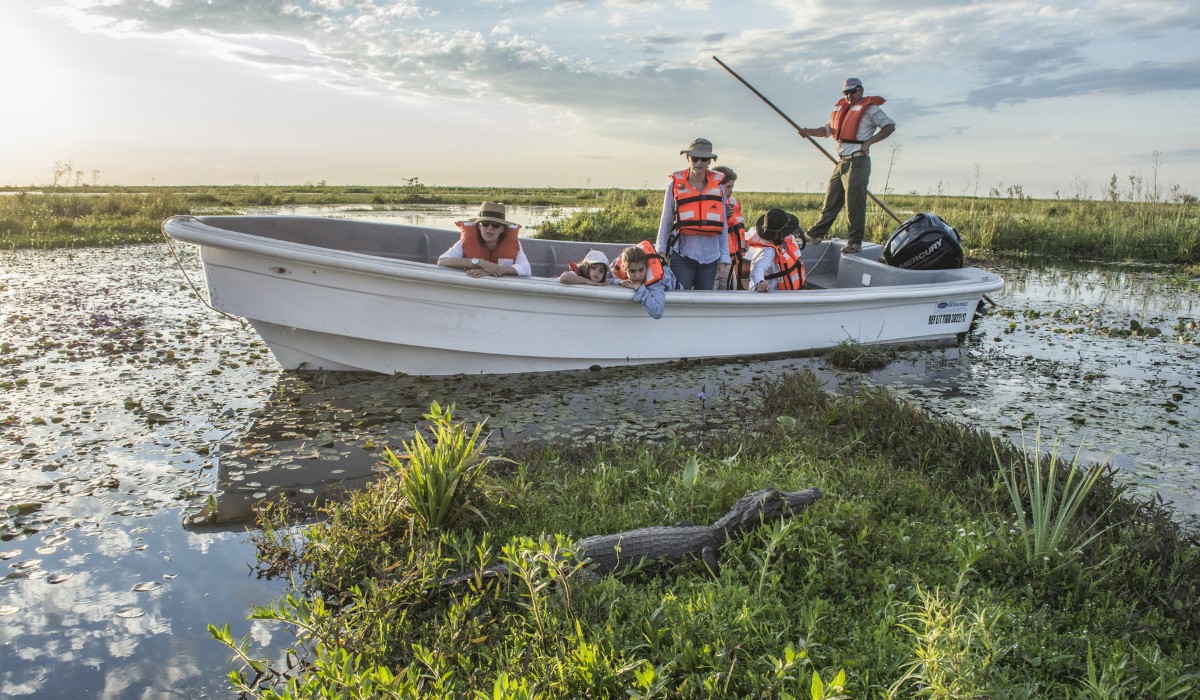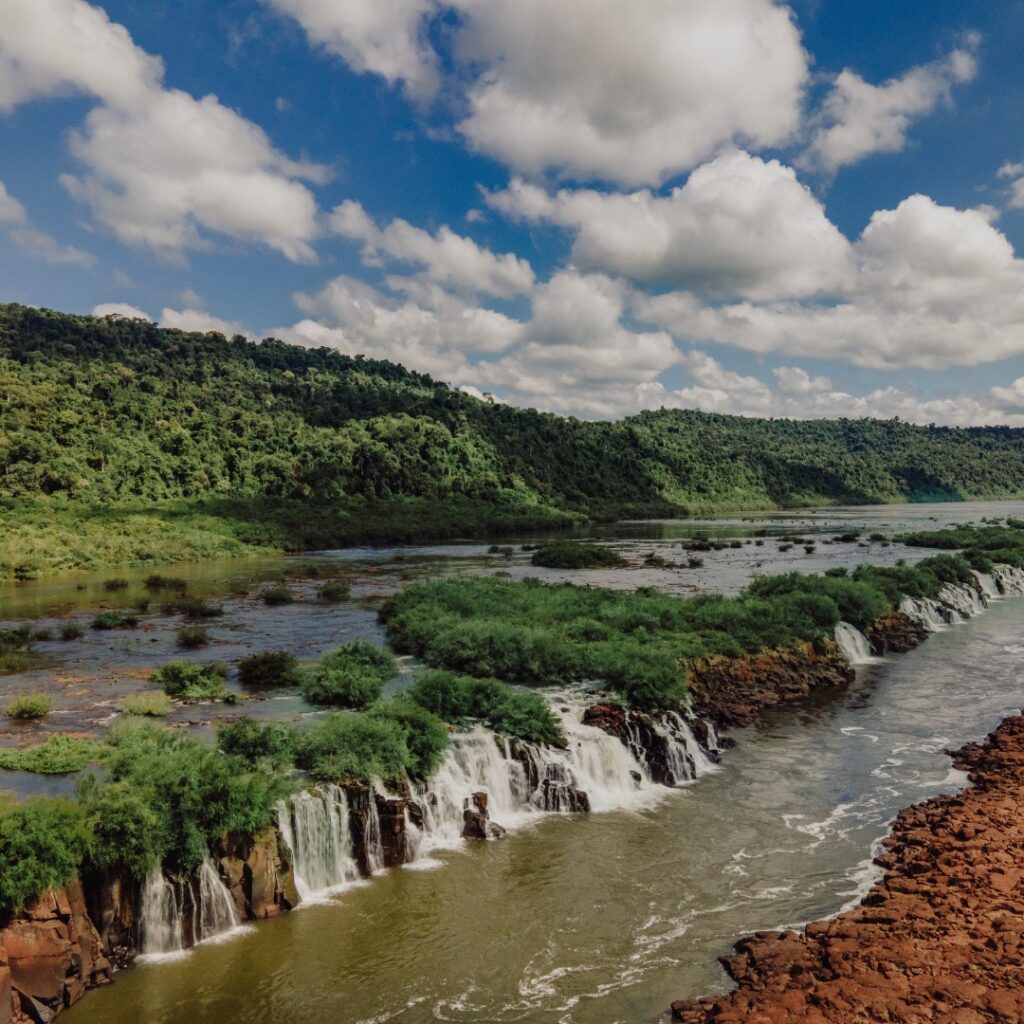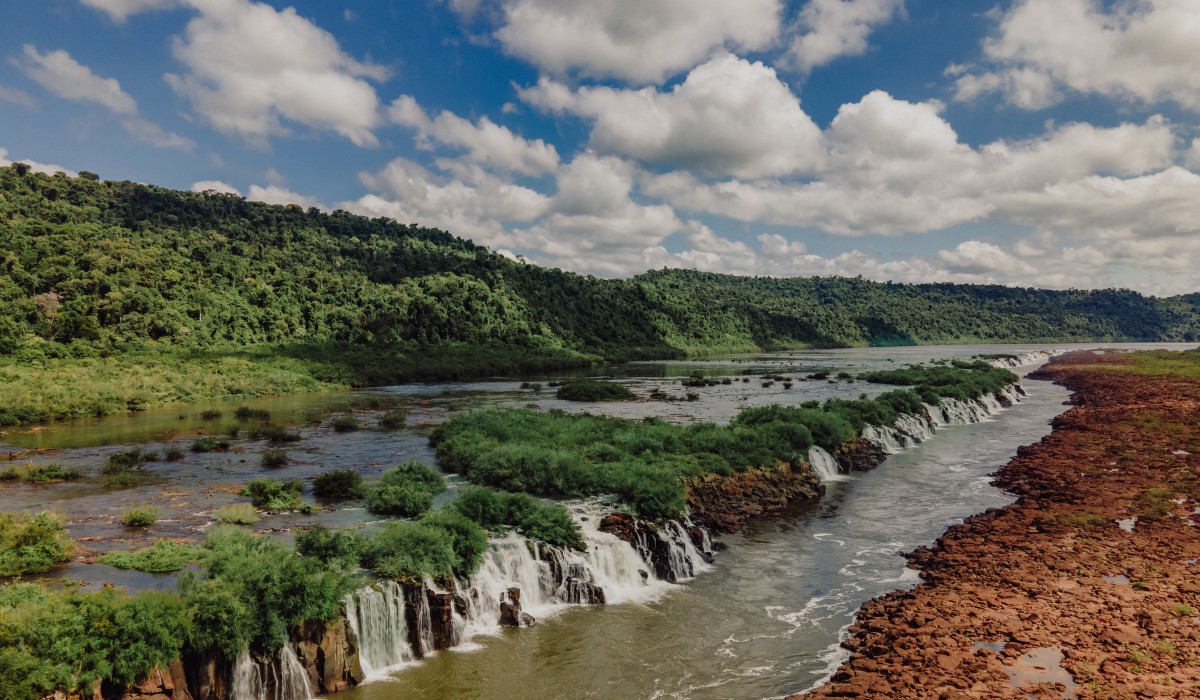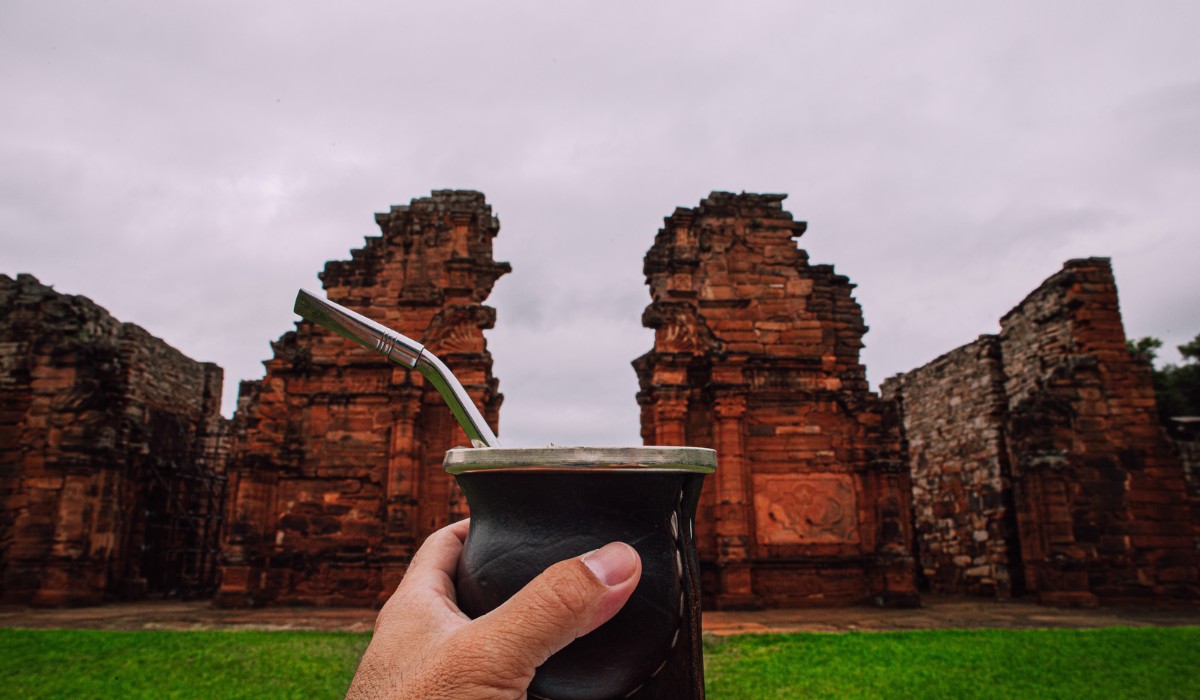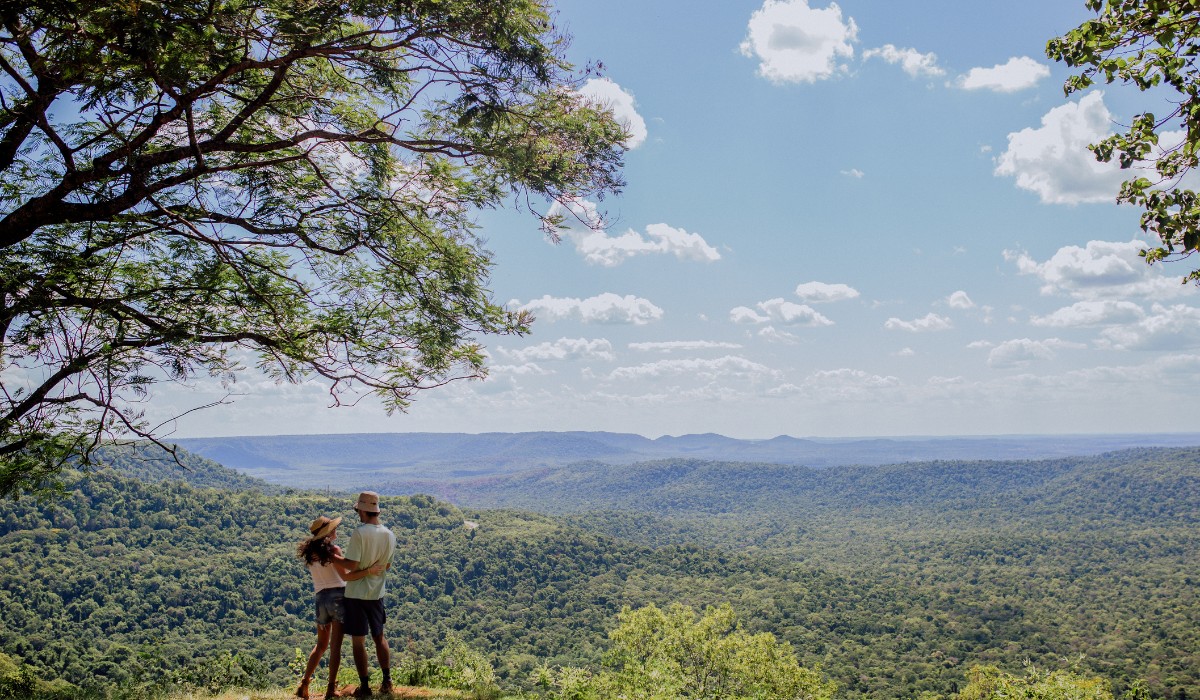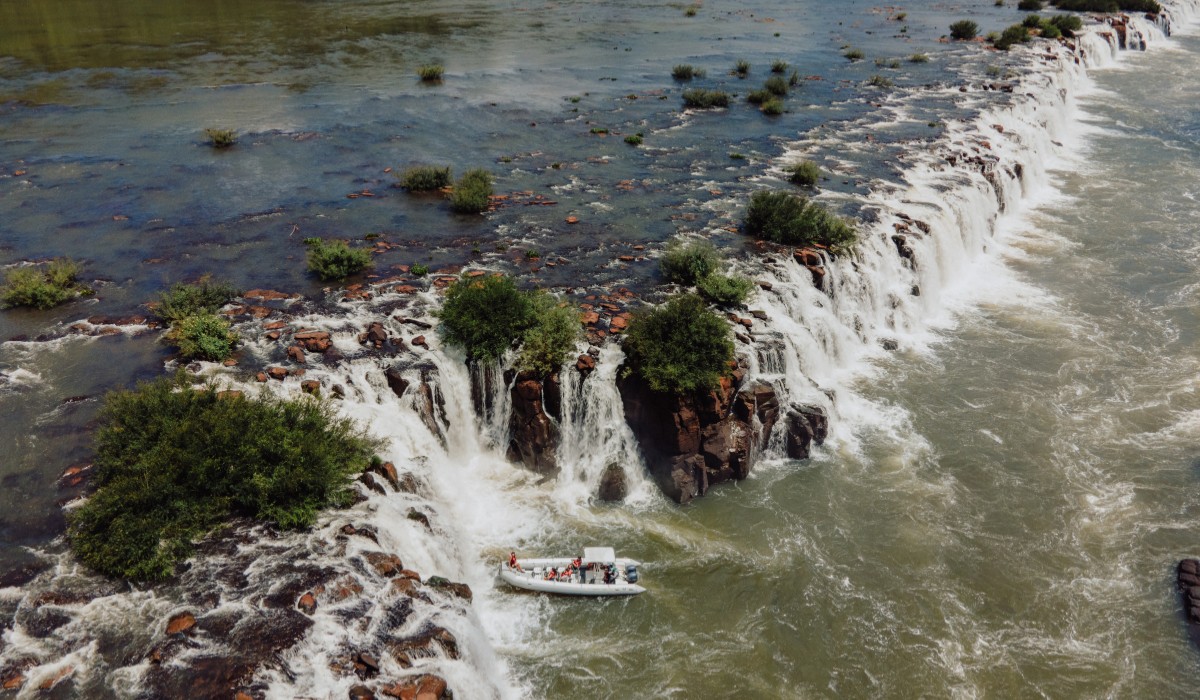Drive through Iguazú: the best day-by-day itinerary
Drive through Iguazú is one of the best ways to discover the red soil of Misiones and its stunning landscapes. Having the freedom to move transforms a trip often designed by others into what you want. A unique journey, a unique experience. What will you find? Jungle, the breathtaking waterfalls, and dazzling wildlife.
We always say it: if you dare to go beyond the traditional circuits, everything changes. It may seem like we already know what to do in Iguazú National Park, but there are still hidden corners to discover. All you need is a car and a desire for a different kind of trip.
At Rentennials, we want you to reach those places where no one goes. That’s why, in this guide, we show you the best way to drive through Iguazú so you can keep it in mind when planning your journey.
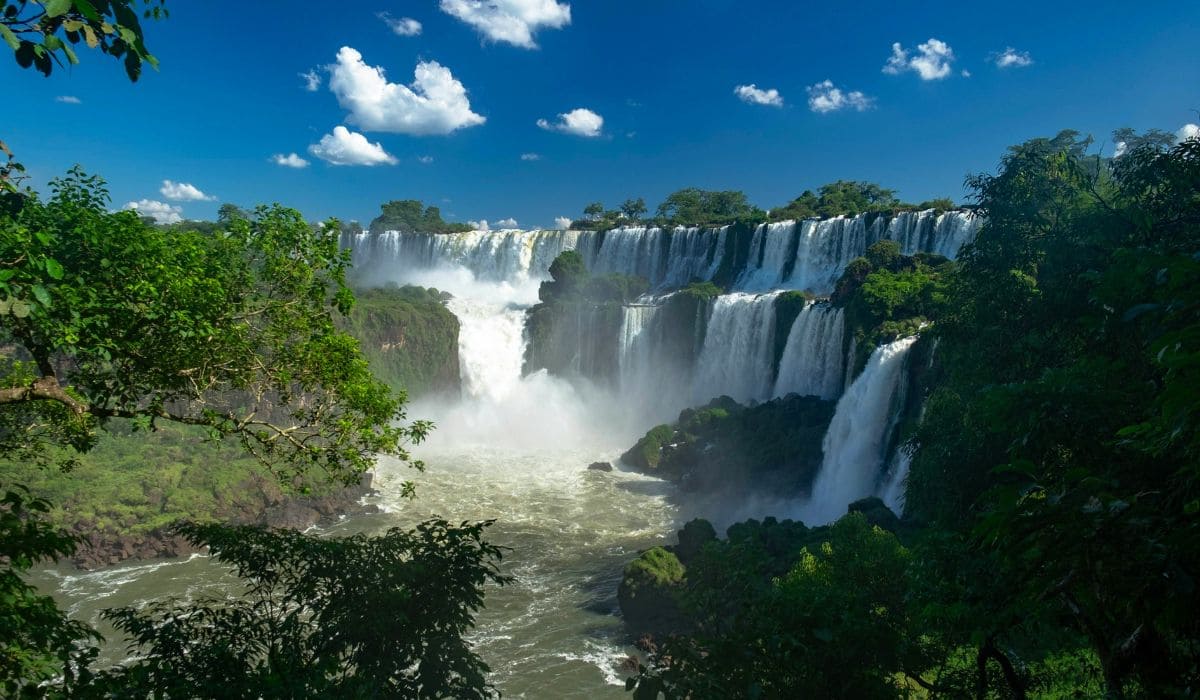
Where are the Iguazú Falls?
The Iguazú Falls are located within Iguazú National Park in the province of Misiones, in northeastern Argentina. The closest city is Puerto Iguazú, so the first thing you need to do is get there by car, bus, or plane.
It’s easy to access thanks to daily flights and road connections linking this destination with the rest of the country.
How many days are needed to visit the Iguazú Falls?
To visit the Iguazú Falls and nearby places, you need at least 2 days. However, we recommend staying between 3 and 5 full days. This allows you to travel at your own pace, without rushing.
First step: fly and rent a car in Iguazú
If you have limited time, the best way to visit the Falls is by flying to the city of Iguazú. Aerolíneas Argentinas, Flybondi, and JetSmart offer several flights from Buenos Aires. From Córdoba or Mendoza, you’ll likely have a layover in Aeroparque or Ezeiza.
Once there, you’ll need to rent a car either in Puerto Iguazú or at the airport. Freedom of movement is the key advantage when you drive through Iguazú.
Day-by-day itinerary to drive through Iguazú
We suggest arriving on one of the first flights of the day to Puerto Iguazú. But since that’s not always possible, take it easy on day one and do some non-essential activities.
Here’s what to do each day at the Iguazú Falls.
Day 1: Arrival and visit to the Three Borders Landmark and Puerto Iguazú
Whether you arrive in the morning or around noon, this day is perfect for something relaxing. Puerto Iguazú invites you to explore a traditional border town.
The Puerto Iguazú riverside is beautiful. Walking by the river and enjoying the northeastern climate is a rare treat. The Three Borders Landmark marks the symbolic meeting point of Argentina, Brazil, and Paraguay.
Another option is a catamaran ride on the Iguazú River—something few people do and a unique way to see the river landscape.
In the afternoon, visit Güirá Oga, a sanctuary for rescued animals that aims to rehabilitate and return them to the wild. Ideal for families with kids.
At night, don’t miss the IceBar Iguazú, a fun and totally different place to enjoy a drink.
Day 2: Iguazú National Park, one of the most beautiful in the world
Now it’s time to visit Iguazú National Park and its iconic waterfalls. Arrive early to make the most of your day.
Divide your visit between the Upper Circuit and the Lower Circuit. These paths offer spectacular panoramic views of the falls. You can take your time and enjoy each viewpoint.
The other half of your day should be spent at the Devil’s Throat, the most awe-inspiring part of the falls. The Ecological Train takes you to Devil’s Throat Station. From there, it’s a short walk to one of the most impressive sights on Earth.
What should you do first? The Devil’s Throat. Then explore the other two circuits.
One tip: although there are places to buy food in the park, it’s best to bring your own—some sandwiches, for example. And don’t feed the animals!
Day 3: Walk the Macuco Trail and do the Great Adventure
Many recommend visiting the Brazilian side on this day. But at Rentennials,we aim to offer unique experiences, different from the crowd. That’s why we suggest heading back to Iguazú National Park to explore its lesser-known side.
Take the Macuco trail a 3-hour jungle walk where you’re likely to encounter wildlife and enjoy the sounds of nature away from the crowds. The best time to start is 8 a.m., when the park opens. These are the hidden gems of driving through Iguazú and embracing your travel freedom.
After your hike, around midday, it’s time for The Great Adventure—a boat tour to the base of the waterfalls. It costs about 80 USD, for ages 12 and up. Book in advance.
Day 4: Reach the other side of the Misiones jungle
Today we suggest exploring the Misiones jungle by taking Route 101 to Comandante Andresito, then heading to Urugua-í Provincial Park.
here, enjoy hiking in the jungle.
After visiting the park, return to Puerto Iguazú via Provincial Route 19, connecting to National Route 12.
Urugua-í Park is perfect for seeing Misiones wildlife and nature. You’ll find several trails to walk throughout the day. Visit early in the morning or late afternoon for the best experience.
This is what we mean by driving through Iguazú: a 200 km loop through Misiones, with only 40 km on dirt roads.
How to do it? As soon as you leave Puerto Iguazú on Route 101, you’ll find a Gendarmerie checkpoint. Ask about road conditions. If the road is open (usually in dry seasons), drive slowly. At some point, turn off the engine and listen to nature. You won’t regret it.
Here’s the map of the Route 101 loop through northern Misiones.
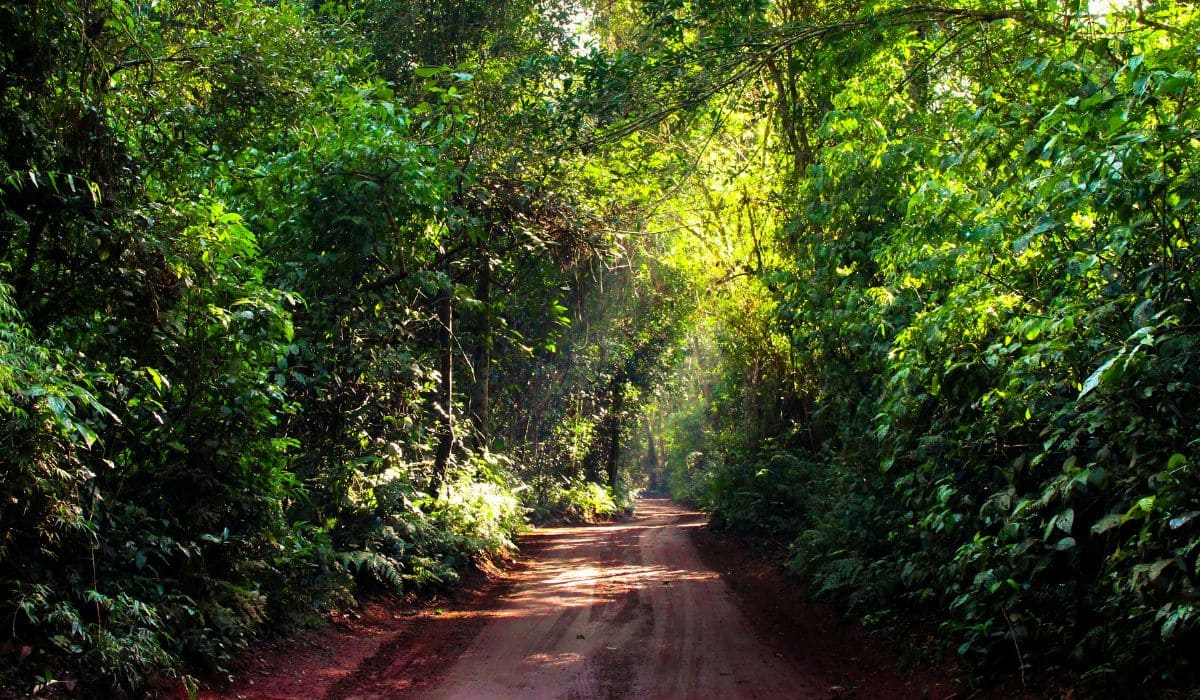
Day 5: What’s left and heading back home
Use this final day to visit anything you missed.
If your flight is at night, a good idea is to cross to Brazil or Paraguay for shopping. Just make sure you leave time for the border crossing so you don’t miss your flight.
When is the best time to drive through Iguazú?
From April to October is the best time to visit the Iguazú Falls. Less rain, milder temperatures. Avoid winter holidays and long weekends as crowds can ruin the experience.
Can you visit the Falls in summer?
Yes, but keep in mind it’s hot and rainy.
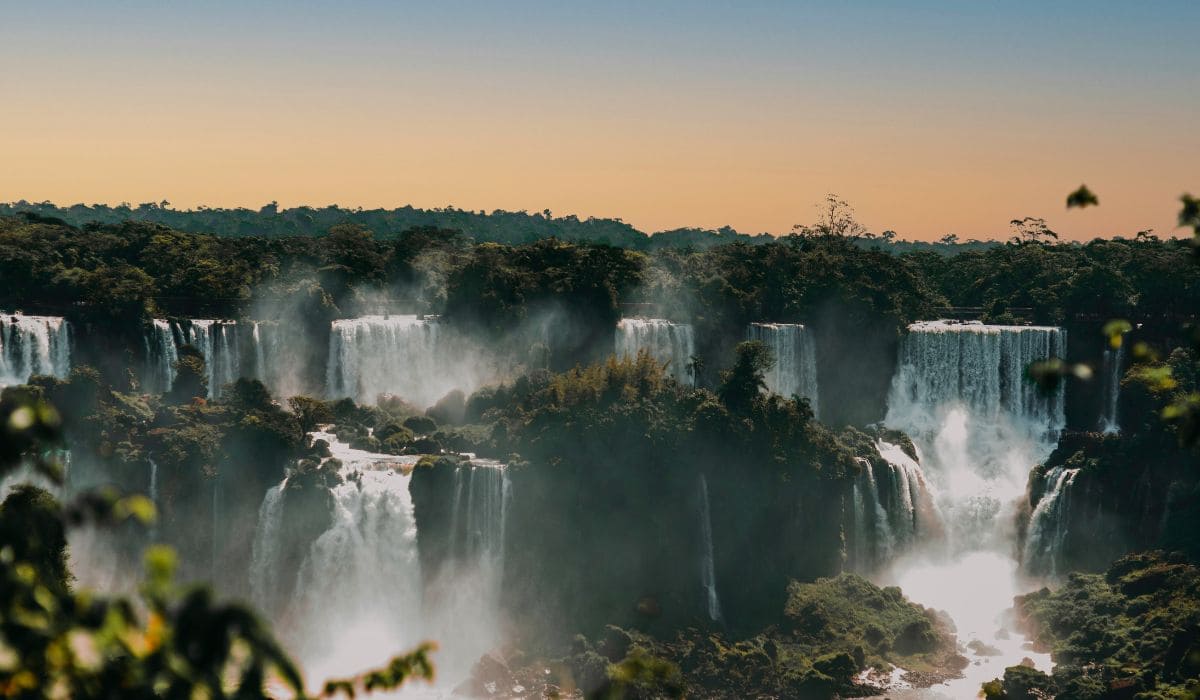
Where to stay when driving through Iguazú
There are two options: stay in Puerto Iguazú or in lodges further into the jungle.
Accommodation in Puerto Iguazú
As you might expect, there are hundreds of hotels. Be sure to choose one with a pool to cool off in the afternoons.
Some options we like:
Sleep in a jungle lodge in Misiones
For exclusive experiences, jungle lodges offer top-notch services in a natural setting.
Our favorites:
Where to eat in Puerto Iguazú
You must try dishes with regional and authentic flavors. Trust the waitstaff’s recommendations. Choose cassava flour, local fish, meats, and jungle fruits.
Our top restaurants:
Bonus track: how to reach Iguazú by car
Some travelers want to feel Argentina’s roads at their fullest. If you’re the kind who enjoys a road trip to one of the most beautiful places in the world, then Misiones and driving through Iguazú are calling your name.
Here’s how to get there, whether in your own car or one rented in your city.
From Buenos Aires to Iguazú
One of the easiest drives: Route 14 to Posadas, then Route 12 to Puerto Iguazú.
It’s 1,277 km, mostly on highways. You could do it in one day, but it’s better to stop overnight in places like Concordia or Yapeyú (and visit San Martín’s birthplace!).
Here’s the map from Buenos Aires to Puerto Iguazú.
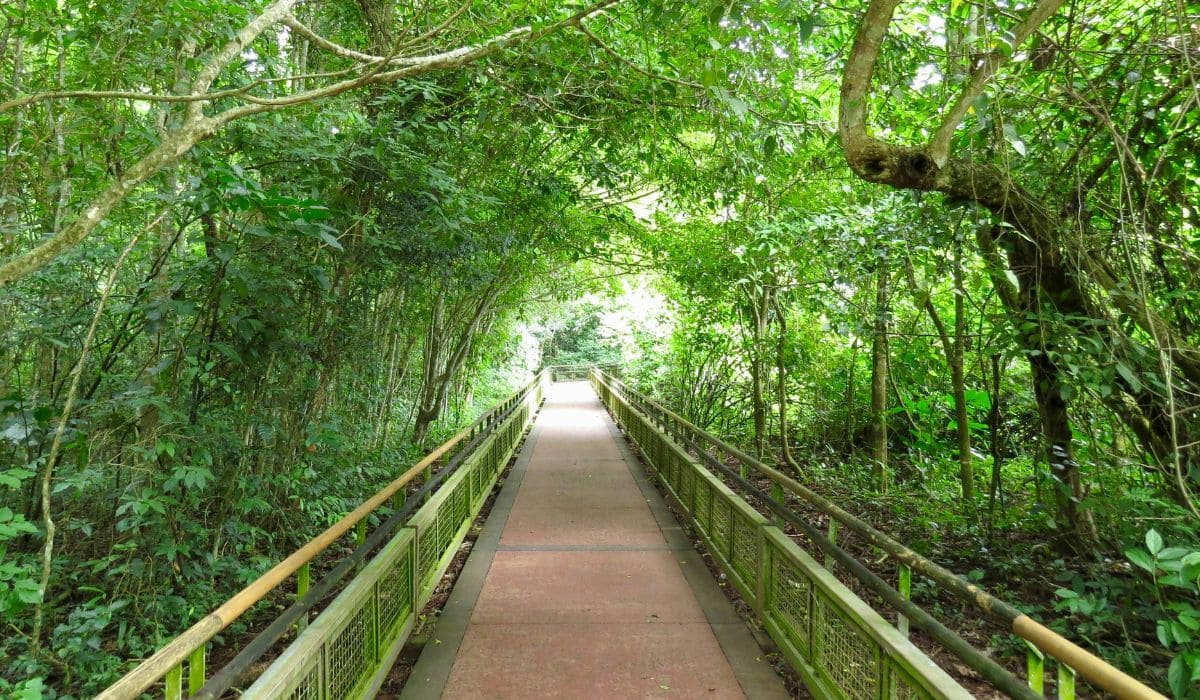
From Mendoza to Iguazú
Almost 2,000 km separate Mendoza and Iguazú. Take Route 7 to San Luis, then Provincial Route 10 to Río Cuarto. Continue via Route 158 and 19 to Paraná, then Route 127 until you connect with Route 14. Continue to Posadas, then to Puerto Iguazú via Route 12.
It’s a long journey, but it’s worth doing one of the most sought-after road trips.
Tip: stop overnight in Córdoba or Santa Fe.
Here’s the map from Mendoza to Iguazú.
From Córdoba to Iguazú
1,500 km separate Córdoba from Puerto Iguazú. Take Route 19 to Paraná, cross Entre Ríos via Route 127, then connect with Route 14, continue to Posadas, and finally take Route 12 to Puerto Iguazú.
It’s a long trip, but very doable. A good tip: leave early and stop overnight in Yapeyú, Corrientes.
Here’s the map from Córdoba to Iguazú.
Rent a car in Iguazú and feel the power of the Falls
Visiting the Iguazú Falls is a once-in-a-lifetime experience. You can do it the traditional way, or go beyond into the jungle. That’s why we recommend driving through Iguazú, to discover the hidden secrets of Misiones.
Renting a car in Puerto Iguazú is the first step (or arriving in your own car). The second step is to explore Misiones’ roads, visit the Iguazú National Park your way, and go beyond the obvious. At Rentennials, we make it simple so renting your vehicle isn’t a concern and you can enjoy your vacation from the very first moment.
The Falls are waiting for you!
We are Rentennials
Rentennials is the new way to rent cars from local hosts in your city, quickly, easily, and affordably. It's also your new path to starting your own car rental business and making money every month.
Discover more.
